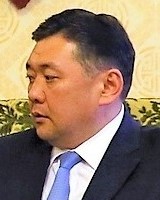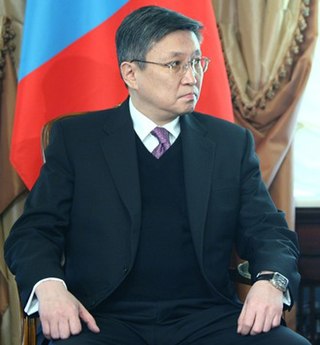The economy of Mongolia has traditionally been based on agriculture and livestock. Mongolia also has extensive mineral deposits: copper, coal, molybdenum, tin, tungsten, and gold account for a large part of industrial production. Soviet assistance, at its height one-third of Gross domestic product (GDP), disappeared almost overnight in 1990–91, in the time of the collapse of the Soviet Union. Mongolia was driven into deep recession.
Telecommunications in Mongolia face unique challenges. As the least densely populated country in the world, with a significant portion of the population living a nomadic lifestyle, it has been difficult for many traditional information and communication technology (ICT) companies to make headway into Mongolian society. With almost half the population clustered in the capital of Ulaanbaatar, most landline technologies are deployed there. Wireless technologies have had greater success in rural areas.
The mass media in Poland consist of several different types of communications media including television, radio, cinema, newspapers, magazines, and Internet. During the communist regime in Poland the Stalinist press doctrine dominated and controlled Polish media. The country instituted freedom of press since the fall of communism. The Polish media system's main features are the product of the country's socio-political and economic post-communist transition. These features include: the privatisation of the press sector; the transformation of the state radio and television into public broadcasting services; influx of foreign capital into the media market and European integration of audiovisual media policies. Today the media landscape is very plural but highly polarized along political and ideological divides.

Elbegdorj Tsakhia is a Mongolian politician and journalist who served as President of Mongolia from 2009 to 2017. He previously served as prime minister in 1998 and again from 2004 to 2006.

Miyegombyn Enkhbold is a Mongolian politician who was Prime Minister of Mongolia from January 2006 to November 2007 and Deputy Prime Minister from 2007 to 2012. He has been Chairman of the State Great Khural, the Mongolian parliament, from 2016 to 2019.
Mass media in Morocco includes newspapers, radio, television, and Internet.
The mass media in Georgia refers to mass media outlets based in the Republic of Georgia. Television, magazines, and newspapers are all operated by both state-owned and for-profit corporations which depend on advertising, subscription, and other sales-related revenues. The Constitution of Georgia guarantees freedom of speech. Georgia is the only country in its immediate neighborhood where the press is not deemed unfree. As a country in transition, the Georgian media system is under transformation.

The current Constitution of Mongolia was adopted on 13 January 1992, put into force on 12 February, with amendments made in 1999, 2000 and 2019. The constitution established a representative democracy in Mongolia, enshrining core functions of the government, including the separation of powers and election cycle, and guaranteeing human rights including freedom of religion, travel, expression, private property. The document was written after the Mongolian Revolution of 1990, effectively dissolving the Mongolian People's Republic.

Bayar Sanj is a Mongolian politician who was General Secretary of the Mongolian People's Party from 22 November 2007 to 8 April 2010, and Prime Minister of Mongolia from 22 November 2007 to 29 October 2009. He announced on 26 October 2009, that he was going to resign his position as prime minister due to health reasons. He was replaced by Sükhbaataryn Batbold on 29 October 2009.

Mass media in Somalia includes various radio, television, print and internet outlets. The federal government operates two official radio and TV networks, which exist alongside a number of private and foreign stations. Print media in the country is progressively giving way to news radio stations and online portals, as internet connectivity and access increases. In February 2013, the Ministry of Information, Posts and Telecommunication also launched a broad-based consultative process for the reformation of media legislation.
The mass media in North Macedonia refers to mass media outlets based in North Macedonia. Television, magazines, and newspapers are all operated by both state-owned and for-profit corporations which depend on advertising, subscription, and other sales-related revenues. The Constitution of North Macedonia guarantees freedom of the press and of expression, yet they are not upheld impartially by the authorities. As a country in transition, North Macedonia's media system is under transformation.
The mass media in Serbia refers to mass media outlets based in Serbia. Both state-owned and for-profit corporations operate television, magazines, and newspapers, which depend on advertising, subscription, and other sales-related revenues. The Constitution of Serbia guarantees freedom of speech.
In Slovakia, political information is disseminated through the mass media: television, radio, the press, and the internet. The public is becoming increasingly reliant on the internet for news, with television and the press becoming less important as news sources.
The mass media in Slovenia refers to mass media outlets based in Slovenia. Television, magazines, and newspapers are all operated by both state-owned and for-profit corporations which depend on advertising, subscription, and other sales-related revenues. The Constitution of Slovenia guarantees freedom of speech and Slovenia ranked 40th in the 2016 Press Freedom Index report compiled by Reporters Without Borders, falling by 5 places if compared to the 2015 Index.
The print, broadcast and online mass media in Burma has undergone strict censorship and regulation since the 1962 Burmese coup d'état. The constitution provides for freedom of speech and the press; however, the government prohibits the exercise of these rights in practice. Reporters Without Borders ranked Burma 174th out of 178 in its 2010 Press Freedom Index, ahead of just Iran, Turkmenistan, North Korea, and Eritrea. In 2015, Burma moved up to 144th place, ahead of many of its ASEAN neighbours such as Singapore, as a result of political changes in the country.
Mass media in Niger is a diverse collection of public and private entities, both print and broadcast, centered in the capital of Niamey, but with vibrant regional centers. The media has historically been state funded, and focused on radio broadcast media, as the nation's population is spread over great distances. Niamey boasts scores of newspapers and magazines, many of which are fiercely critical of the government. These papers though have very small circulations, and almost none outside the cities.

The mass media in Ghana, includes television, radio, internet publishing and newspapers.
Montsame is the official state-owned news agency of Mongolia. Montsame is an acronym for Mongolyn Tsakhilgaan Medee. It was founded in 1921. It has permanent correspondents in Ulaanbaatar, Mongolian aimag centers, Beijing, and Moscow.

Khaltmaagiin Battulga is a Mongolian politician and sambo wrestler who served as the 5th President of Mongolia from 2017 to 2021. He served as Member of the State Great Khural from 2004 to 2016 and Minister of Roads, Transportation, Construction and Urban Development from 2008 to 2012. Before his career in politics, Battulga was a sambo wrestling champion. He was the Democratic Party's candidate in the 2017 presidential election and was elected President with 50.6% in the run-off, the first-ever run-off election in modern Mongolian history. Mongolians are divided about his role in the 2019 Mongolian constitutional crisis.

Ölziisaikhany Enkhtüvshin is a Mongolian politician who was Chairman of the Mongolian People's Party from 25 July 2012 to November 2013 and Deputy Prime Minister in the government of Ukhnaagiin Khürelsükh from October 2017.









